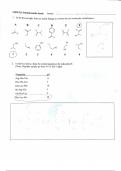Peptid Study guides, Class notes & Summaries
Looking for the best study guides, study notes and summaries about Peptid? On this page you'll find 87 study documents about Peptid.
Page 4 out of 87 results
Sort by
Full notes on amino acids, peptides and protein structure.
GVSU CHM 232 Lecture WS w Professor Leonard - Fall 2022
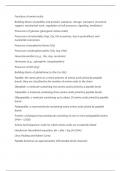
-
Peptides and Proteins class notes for CHEM 470/BIOS 470x
- Class notes • 2 pages • 2023
- Available in package deal
-
- $2.99
- + learn more
Class notes for peptides and proteins
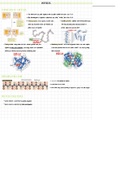
-
Peptides
- Class notes • 5 pages • 2022
-
- $7.99
- + learn more
- How are peptides formed? - Primary structure of peptides - How do proteins know how to fold? - Secondary structure of peptides - What are alpha-helices? - What are beta strands? - Structure of beta-sheet - Tertiary structure of peptides - What is a disulfide bond and how are they formed? - Quaternary structure of peptides

-
Antibiotics that weaken the peptidoglycan cell wall make a bacterium
- Exam (elaborations) • 1 pages • 2023
-
- $7.17
- + learn more
Antibiotics that weaken the peptidoglycan cell wall make a bacterium more prone to Choose one: O A. phagocytosis by macrophages. O B. detaching from surfaces. C. osmotic lysis. D. shrinkage in hypertonic solutions. E. starvation Solution C. osmotic lysis. Penicillins and cephalosporins, as well as other beta-lactam antibiotics targets the peptidoglycan synthesis making the cell wall weak leading to osmotic lysis of the bacterium.
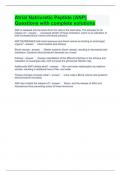
-
Atrial Natriuretic Peptide (ANP) Questions with complete solutions
- Exam (elaborations) • 1 pages • 2023
-
Available in package deal
-
- $9.99
- + learn more
Atrial Natriuretic Peptide (ANP) Questions with complete solutions ANP is released into the blood from the cells in the heart atria. The stimulus for its release is? increased stretch of these chambers, which is an indication of both increased blood volume and blood pressure ANP DECREASES both blood pressure and blood volume by binding to what target organs? blood vessels and kidneys Blood vessels Dilates systemic blood vessels, resulting in decreased total resistance. Systemic...
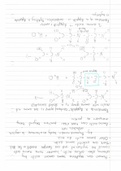
-
Amino acids, Peptides and Proteins
- Class notes • 1 pages • 2023
-
Available in package deal
-
- $9.64
- + learn more
Amino acids are the monomers from which proteins are made. The general structure of an amino acid as: where NH2 represents an amine group, COOH represents a carboxyl group and R represents a side chain. The twenty amino acids that are common in all organisms differ only in their side group. A condensation reaction between two amino acids forms a peptide bond. Dipeptides are formed by the condensation of two amino acids. Polypeptides are formed by the condensation of many amino acids....
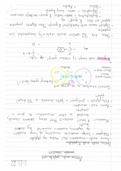
-
Amino acids, peptides and proteins
- Summary • 1 pages • 2023
-
Available in package deal
-
- $9.64
- + learn more
Amino acids are the monomers from which proteins are made. The general structure of an amino acid as: where NH2 represents an amine group, COOH represents a carboxyl group and R represents a side chain. The twenty amino acids that are common in all organisms differ only in their side group. A condensation reaction between two amino acids forms a peptide bond. Dipeptides are formed by the condensation of two amino acids. Polypeptides are formed by the condensation of many amino acids....
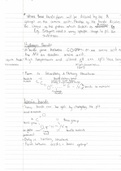
-
Amino acids, peptides and proteins
- Summary • 1 pages • 2023
-
Available in package deal
-
- $9.64
- + learn more
Amino acids are the monomers from which proteins are made. The general structure of an amino acid as: where NH2 represents an amine group, COOH represents a carboxyl group and R represents a side chain. The twenty amino acids that are common in all organisms differ only in their side group. A condensation reaction between two amino acids forms a peptide bond. Dipeptides are formed by the condensation of two amino acids. Polypeptides are formed by the condensation of many amino acids....
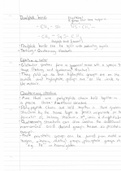
-
Amino acids, peptides and proteins
- Summary • 1 pages • 2023
-
Available in package deal
-
- $9.64
- + learn more
Amino acids are the monomers from which proteins are made. The general structure of an amino acid as: where NH2 represents an amine group, COOH represents a carboxyl group and R represents a side chain. The twenty amino acids that are common in all organisms differ only in their side group. A condensation reaction between two amino acids forms a peptide bond. Dipeptides are formed by the condensation of two amino acids. Polypeptides are formed by the condensation of many amino acids....

How did he do that? By selling his study resources on Stuvia. Try it yourself! Discover all about earning on Stuvia

